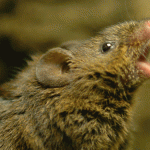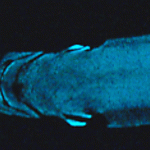
An academic debate might change the way some psychologists deal with their patients. Image: Shutterstock
Emotions are not as biologically “basic” as we might think.
According to an article published by the Association for Psychological Science in the US, facial muscle movements (expressions) are not necessarily conveyed as an automatic reaction. Instead, they are used as symbols for the addresser to communicate how they want the addressee to observe the way they are feeling, even if the emotion being conveyed is fabricated.
“When do you ever see somebody pout in sadness? It’s a symbol,” said Lisa Feldman Barrett of the Interdisciplinary Affective Science Laboratory and author of the new paper. “Like in cartoons or very bad movies. People pout when they want to look sad, not necessarily when they actually feel sad.”
There are two major perspectives on the origins of emotions. The constructivist approach, which identifies emotions as being socially and culturally constructed, and the Darwinian approach, where emotions are perceived as being evolved adaptations — the product of natural selection.
The latter, based on Darwin’s The Expression of the Emotions in Man and Animals, suggests there are “basic emotions” that are biologically limited in their form and function. For example, widening of the eyes in fear to assist in taking in more information about the scene, while also signalling that something dangerous is happening.
However, Barrett asserts that Darwin didn’t write that emotional expressions are functional, rather he recognised emotional expressions as being akin to the vestigial tailbone, persistently present in natural selection despite having no real use.
Scientists generally believe that emotions regulate your physical response to a situation, yet Barrett argues that there is no evidence that a certain emotion produces the same physical changes each time it is experienced. “There’s a tremendous variety in what people do and what their bodies and faces do in anger or sadness or in fear,” Barrett said.
“Instead of stating that all emotions fall into a few categories, and everyone expresses them the same way, psychologists should work on understanding how people vary in expressing their emotions.”
Sources: Eureka Alert







Janice resnick
May 28, 2012
The two explanations for emotional expression — culturally situated and evolutionary are not necessarily mutually exclusive: i.e. automatic expressions in response to an emotional stimuli and “staged” expressions to convey a desired message to others. Perhaps a sad expression doesn’t get the desired attention, but a pouting expression does.